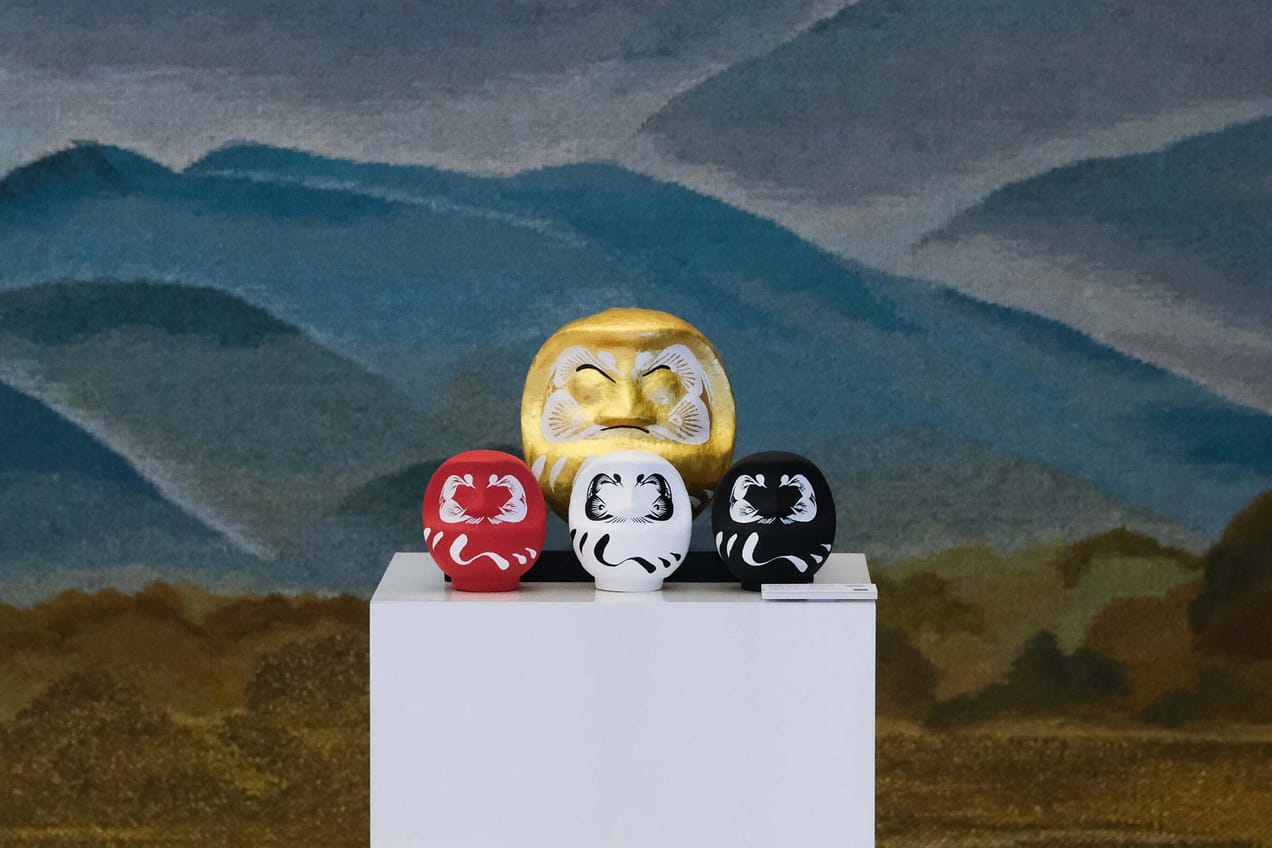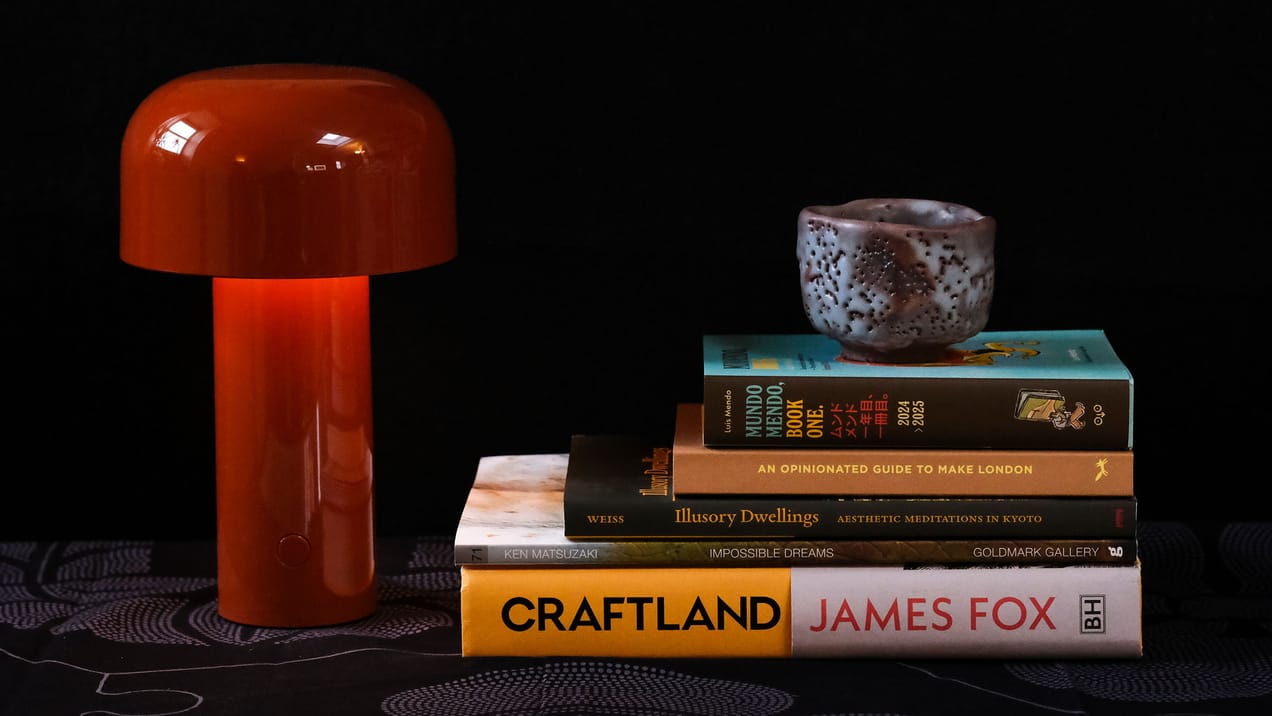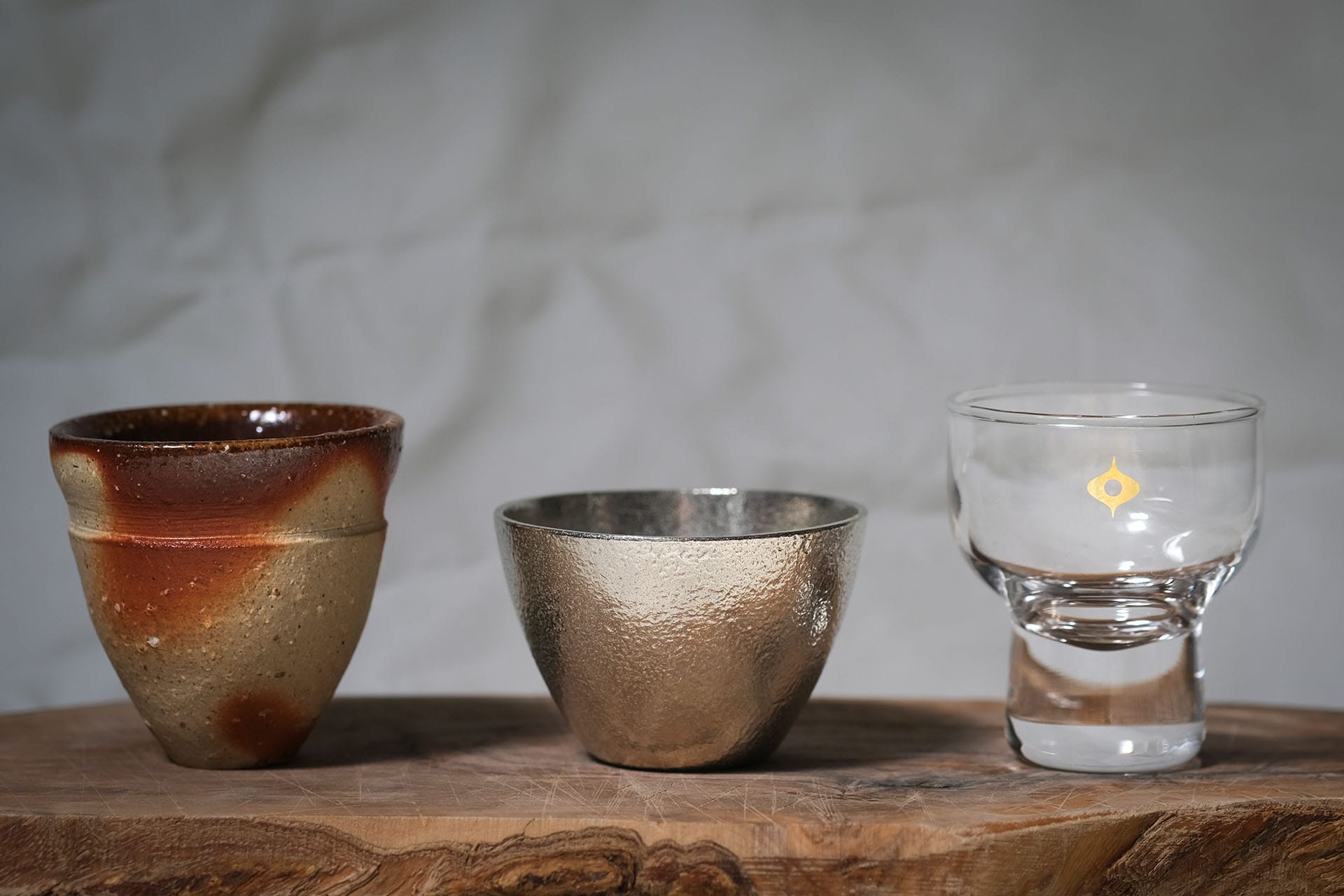
The playful guinomi
This is the second essay in a three-part series that started with The humble yunomi.
In Japanese drinking culture, the container often matters as much as what fills it. May is my birthday month so in the spirit of celebrating life, I thought it would be appropriate to write about guinomi, the little cups used for drinking sake.
If the yunomi is cheap and reliable, the workhorse of everyday life, and chawans are the ne plus ultra of a potter's oeuvre, what role does the guinomi play in the universe of Japanese drinking vessels?
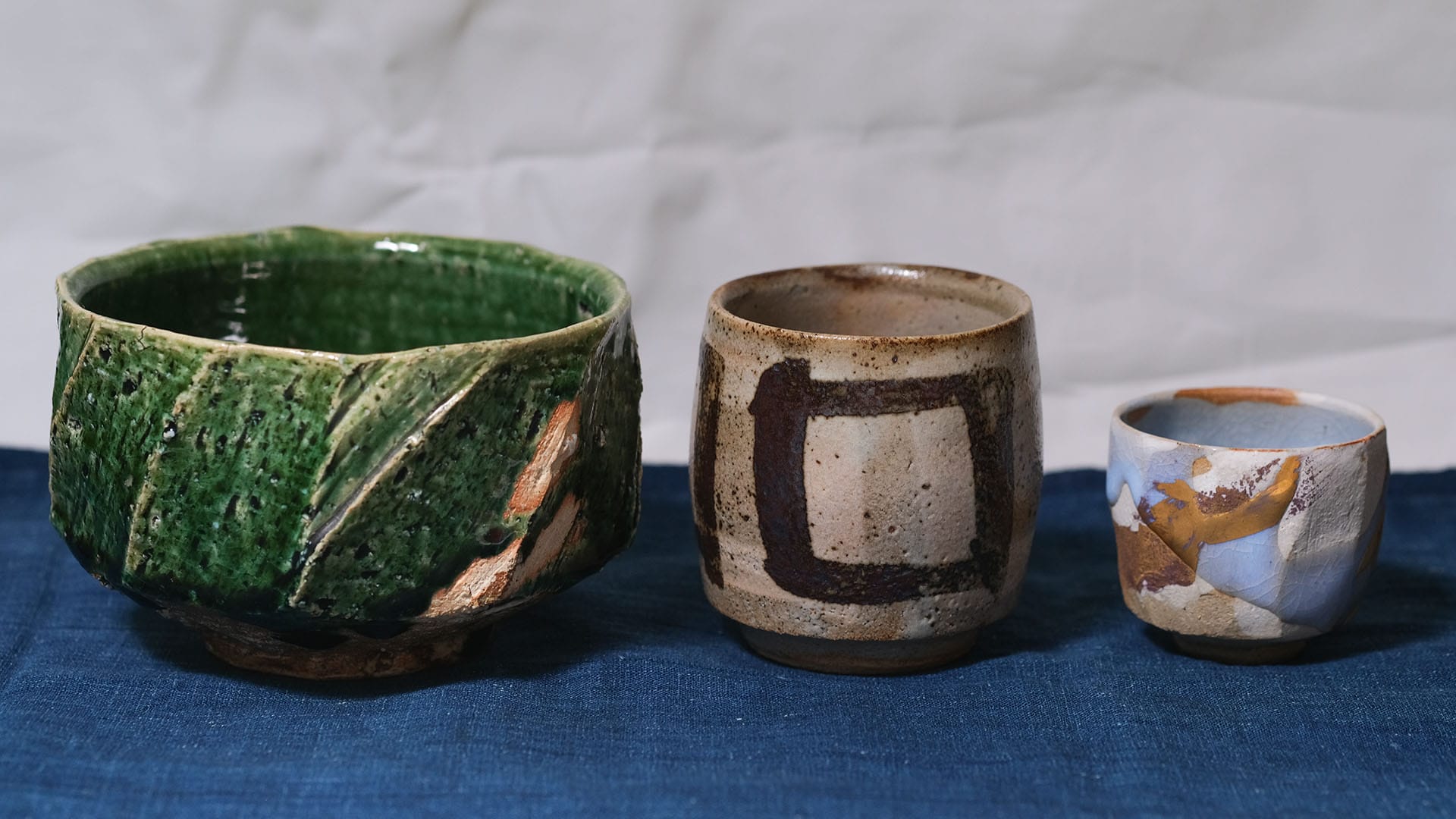
Guinomi are the most playful and smallest of the trio, although their prestige is second only to that of the chawan. They can be tall or short, elaborately decorated or plain, made of glass, metal, lacquered wood or, most commonly, ceramics. You can hold a guinomi with just three fingers and when you're at a restaurant they're often presented on a tray for you to pick your favourite to drink from.
Sake is not intended to be gulped in one go like a tequila shot. It's meant to be sipped and the average guinomi will contain 20 to 40 ml of liquid, or about two to three sips (other sake drinkware are even smaller, like the o'choko or the formal sakazuki, akin to a tiny saucer).
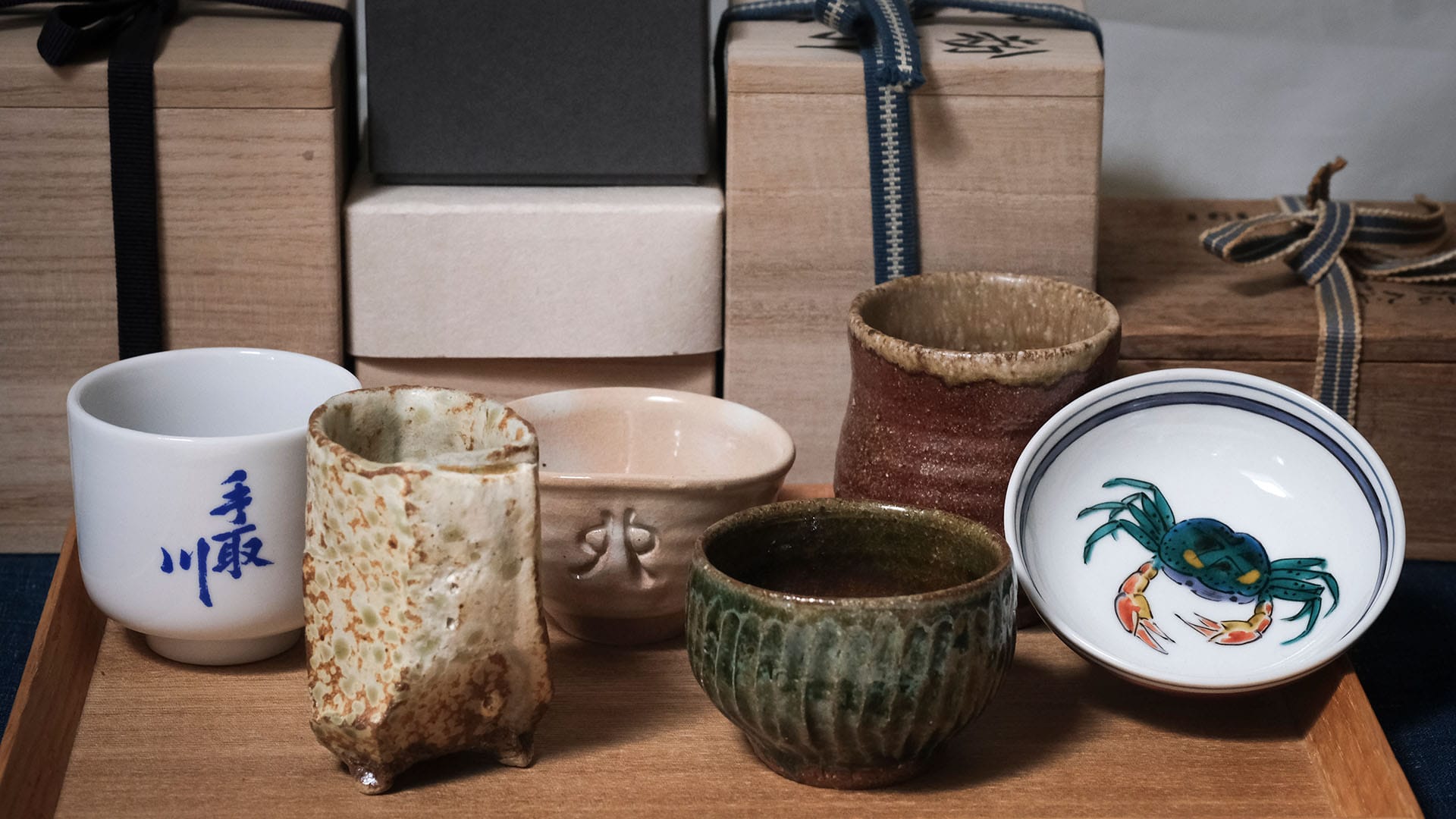
Unlike Western drinking culture that often celebrates excess with oversized pint glasses and wine goblets, guinomi represent measured pleasure, slowing the drinker's hand and focusing the mind on each taste. They also add a touch of tangible beauty to the table, elevating the value of a good drink by pairing it with an equally beautiful cup.
There's only one rule that applies to the use of guinomi and more generally to enjoying sake. It doesn't matter if you're at a ceremonial kaiseki meal or at the local izakaya with friends: you don't pour drink into your own cup. That would be like calling out those around you for being inconsiderate, one of the worst insults in Japan. Likewise, you must always keep an eye on your fellow diners and ensure theirs aren't empty. If yours is and you don't want to be rude, just pour into someone else's and they will dutifully reciprocate, unless you're in the company of barbarians.
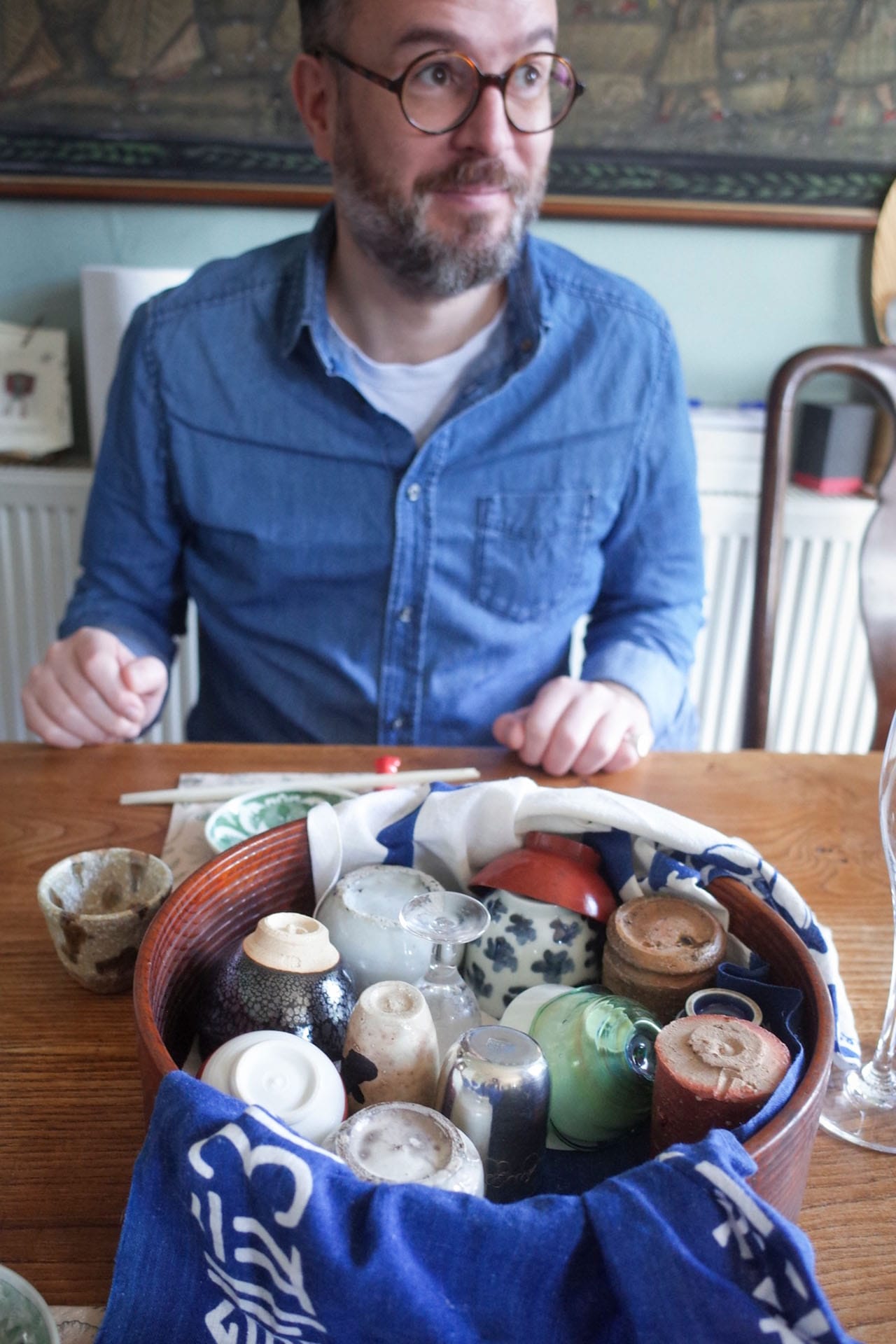
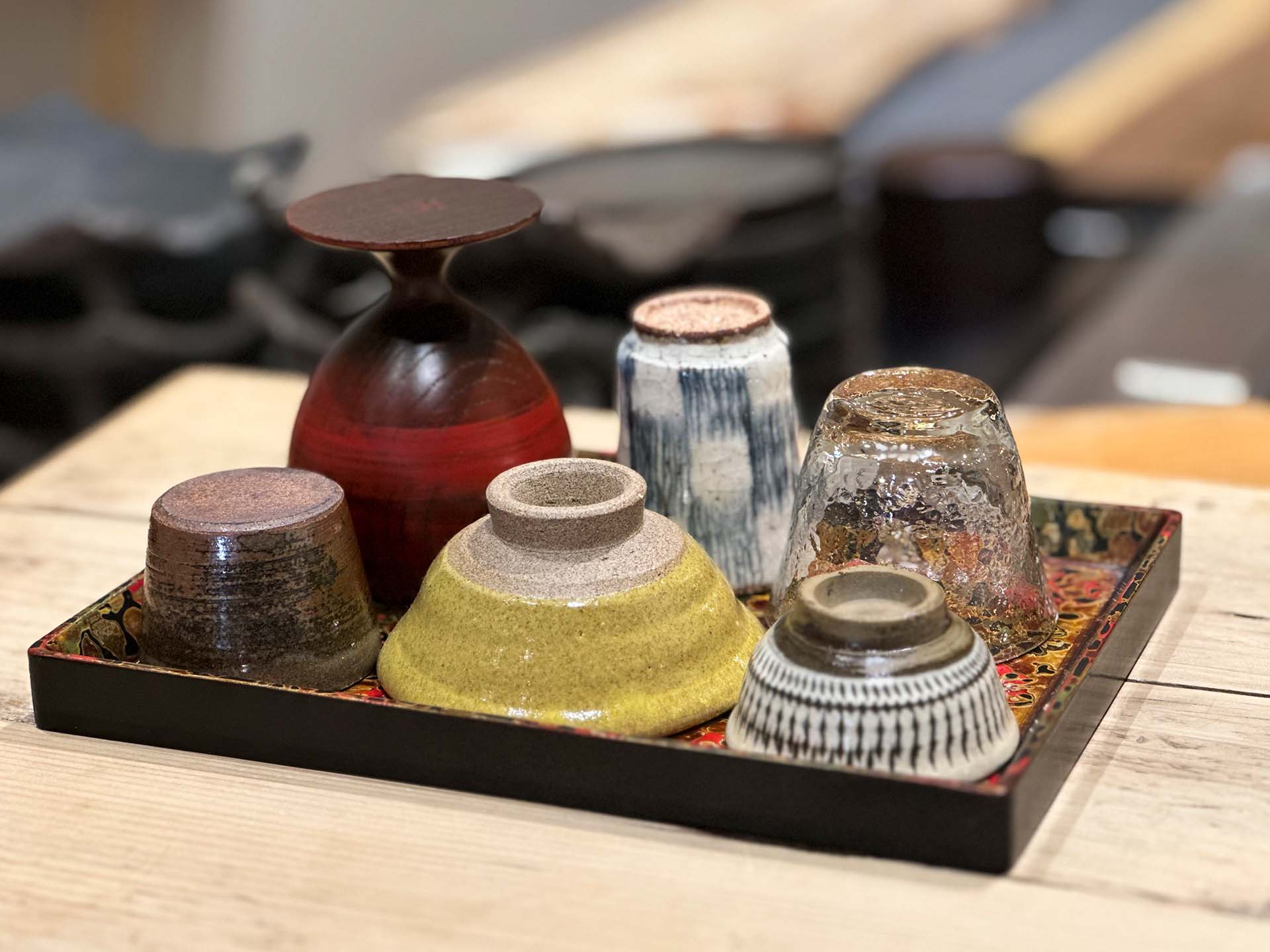
Picking a guinomi to drink from, at my friend's home and at the restaurant. Photo left by Athico Ilye, right by Gianfranco Chicco
And if you rarely consume sake, you can use guinomi to drink tea gongfu style. This refers to the Chinese and Taiwanese custom of brewing small amounts of tea and transferring it into a "fairness jug" (gong dao bei) from which you'll serve into small cups just like guinomi. When I last mentioned this, several Japanese friends objected that they had never seen anyone doing so but it's common practice in the tea community. I frequently use my guinomi for delicate green teas like long jing and gyokuro.
Guinomi offer new collectors an entry point to Japanese ceramics without demanding the space or expense of chawan while maintaining their flair. Their versatility makes them practical additions to any home, whether filled with sake as tradition dictates or repurposed for tea, espresso, or even as holders for the first spring flowers. But at least for my upcoming birthday, I'll make sure to follow tradition.
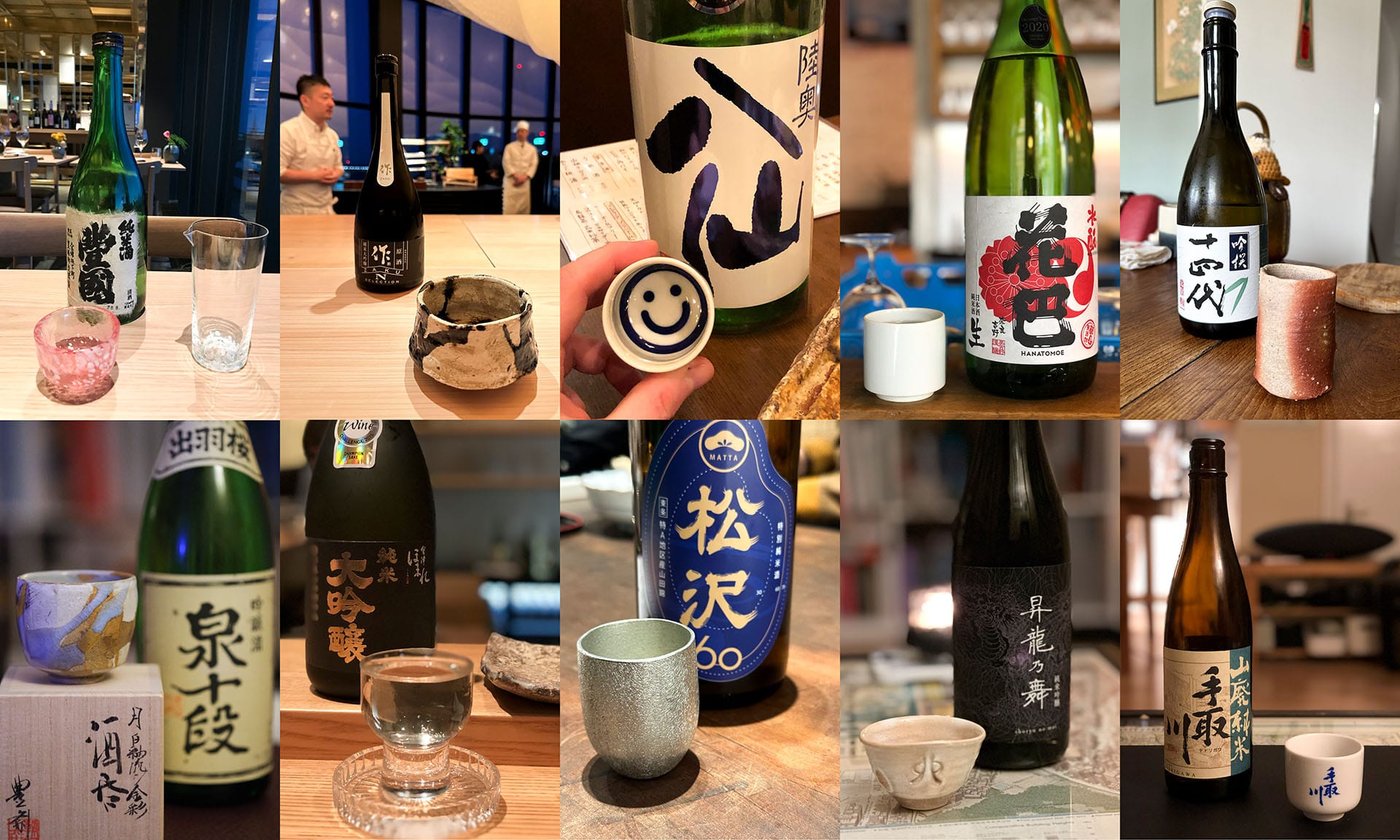
Like the content of The Craftsman? Share it with a friend! You can support my work by offering me a virtual coffee ☕️
つづく


